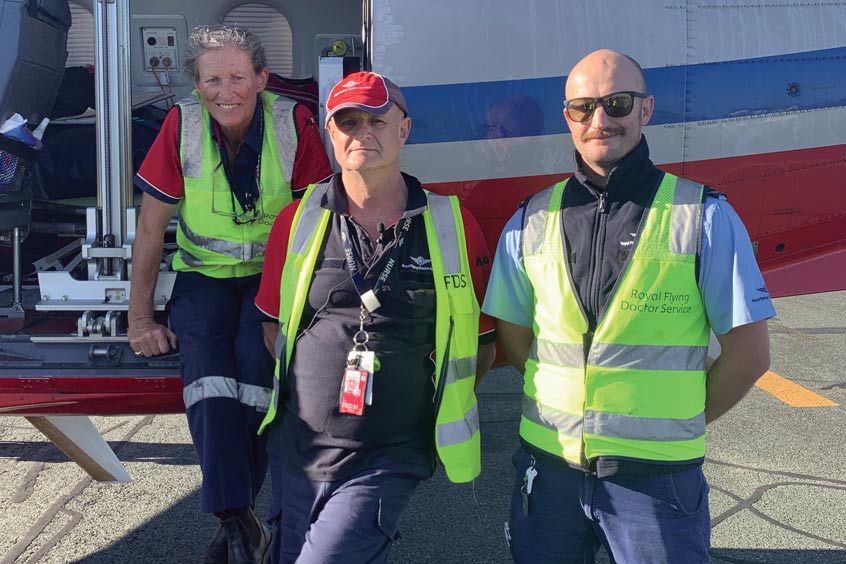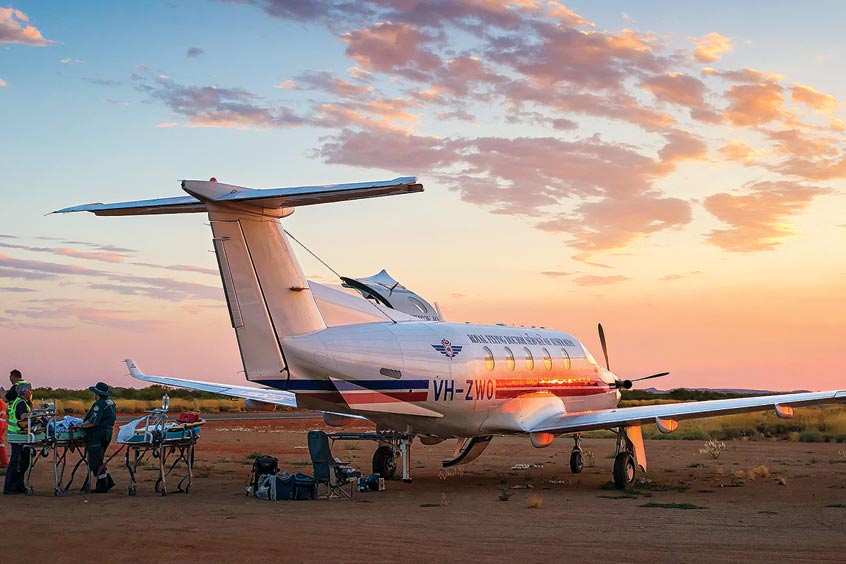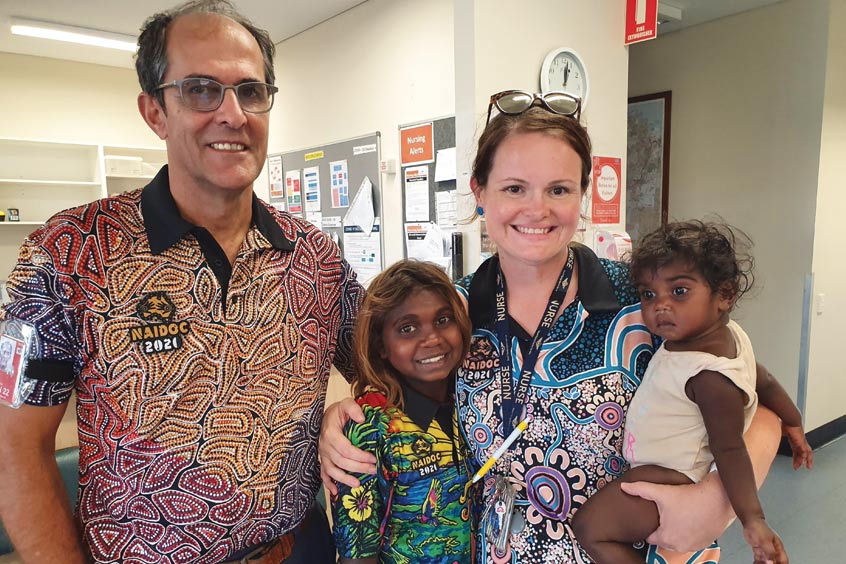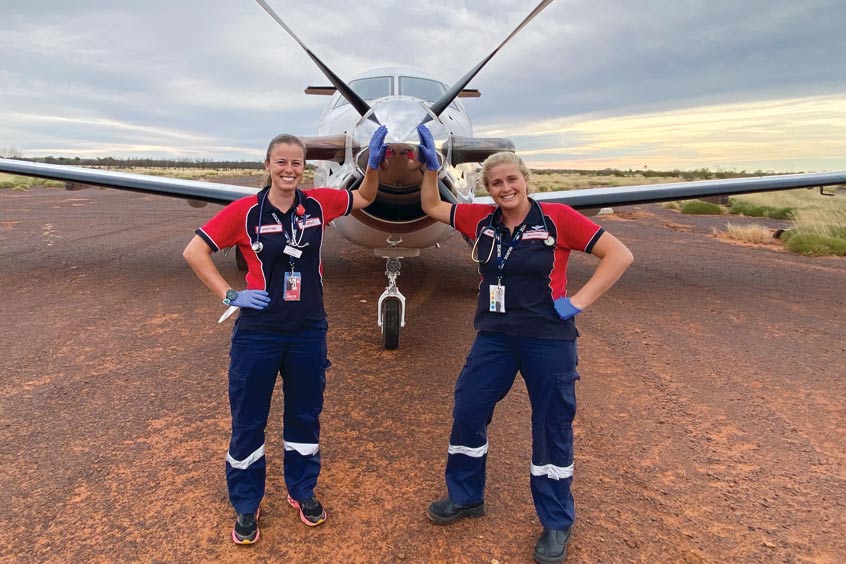ACE 2026 - The home of global charter.
• International Business Aviation Council
• Safety
BAN's World Gazetteer
• China The bimonthly news publication for aviation professionals.
The bimonthly news publication for aviation professionals.







The Royal Flying Doctor Service (RFDS) of Western Australia has expanded its fleet with a factory-new Pilatus PC-12. The PC-12 NG arrived at Jandakot from Switzerland in February, and is the last of its type to be manufactured by Pilatus.
The aircraft was purchased thanks to the support of the Chamber of Commerce and Energy WA and 22 member organisations, who answered RFDS' call for Response Ready COVID-19 assistance in 2020. Engineers will customise the aircraft over 10 weeks to include COVID-19 proofing measures. It will serve as a prototype in transitioning the entire RFDS fleet in WA to include COVID-19 considerations and new aircraft communications and navigation systems.
Increasing the RFDS Western Operations fleet to 16 PC-12s alongside two Rio Tinto LifeFlight PC-24 jets, the expanded fleet capacity will boost emergency response times for multiple cases across the state and help ensure continuous service, as the organisation continues to respond to the pandemic. The organisation's first PC-12 NG was acquired in 2009. Two EC145 helicopters will be joining the service for the first time and a third Rio Tinto LifeFlight jet will be added to the fleet over the next 12 months.
“The Pilatus PC-12 NG is a great all rounder in terms of capacity, amenity, speed, range and performance – making it the perfect choice for the Royal Flying Doctor Service’s aeromedical missions across the vast and remote expanse of Western Australia,” says RFDS Western Australia CEO Rebecca Tomkinson. “Each RFDS aircraft is equipped with state-of-the-art aeromedical equipment and literally serves as an ICU in the sky. When a new RFDS aircraft arrives, it undergoes an aeromedical fit-out with the latest in medical, aviation and communications technology. RFDS engineers who are specialists on the Pilatus built aircraft will install various fittings for stretcher, oxygen, suction and all electrical systems, radio and satellite phone communications, bespoke cabinets and shelving for the storage of medical supplies and luggage; and protectors to prevent chipping and wear and tear on the aircraft.”
RDFS has a waiting room that spans more than 2.5 million square kilometres across Western Australia, which is one of the largest and most remote health jurisdictions in the world. It has five strategically located bases across Western Australia ensuring a far-reaching geographical impact and prompt aeromedical response. The organisation has access and experience in servicing 784 landing strips in WA’s regions.
During the 2019-2020 financial year, the RFDS recorded the busiest year ever in its 93-year-long history. Crews travelled close to eight million kilometres to retrieve and aero medically treat 9,033 patients across WA. That’s an average 25 men, women and children flown to safety each day. This can be in locations as near to Perth as Rottnest Island and as far north as Kununurra and everywhere in between; 24 hours a day, every day. On its busiest day, the RFDS can respond to up to 41 patients.
“In 2020, we faced one of our most challenging years,” Tomkinson continues. “Providing a 24/7 service across the world’s largest health jurisdiction, RFDS carried out its largest ever number of aeromedical transfers as well as providing essential health care services to some of Western Australia’s most remote communities which were further isolated by the pandemic. As COVID-19 reached Australian shores in early 2020, the RFDSWO enacted its business continuity plan and set about ensuring its critical 24/7 service for regional Western Australians would not be interrupted.
“What unfolded was a monumental shift in the RFDSWO operating environment to ensure that any outbreak didn’t impact entire teams critical to maintaining and operating our fleet. This has changed the way we work forever.
At the same time, our flight crews of pilots, nurses and doctors were boarding planes and caring for suspected COVID-19 positive patients in the close confines of a small aircraft. With little known about the disease at the start, RFDSWO took infection control measures to an entirely new level and was responsible for writing Australia’s first aeromedical clinical protocols for COVID-19. Since then, there have been constant updates to the protocol to maintain the highest possible clinical standards to protect patients, our people and the community.
“Our pilots rarely know where they will be flying or landing on any given day. Flight plans change frequently – even mid-flight. Our highly skilled pilots are trained to land on roads or dirt airstrips of all kinds, sometimes calling on locals to light the airstrip with vehicle headlights for night landings.”
As time went on and COVID cases in Western Australia decreased, a boost in regional tourism presented another challenge for the RFDSWO. With more Western Australians ‘wandering out yonder’ and a record number of people returning to the state to live permanently, RFDSWO retrieved more patients than ever seen before.
Though challenging, 2020 rewarded the RFDSWO with valuable lessons in emergency preparedness and an enormous sense of pride in the deep-seated commitment and capability of our people and systems to ensure we were always there for people in their time of need.
In Western Australia, the Royal Flying Doctor Service has been part of the COVID-19 response from the very beginning. Aeromedical teams stood up for the retrieval of the first suspected and confirmed COVID-19 patients from a repatriation mission from Wuhan and from the Diamond Princess cruise ship, transferring them back to our Jandakot base to access specialist care in Perth.
To date, teams have safely transferred 120 suspected or confirmed COVID cases and it remains WA’s only aeromedical service for COVID patients. There has been zero cross infection detected in crews and patients.
Tomkinson adds: “As we move forward into the year ahead, driven by innovation and continuous improvement, our focus is on optimising and enhancing patient outcomes in the air, on the ground and on call. More than ever, our services across aero medical emergency response, rural and remote health clinics and telehealth consults are essential to the safety and wellbeing of Western Australians throughout our state. We will look to foster more private sector partnership participation in solutions that secure the future of our aeromedical charity. We will continue to work together with government, emergency services and health sector peers to optimise our role in WA’s health infrastructure.”
Meanwhile the Queensland Section of RFDS has reinforced its commitment to patient safety, becoming the first dedicated aeromedical provider in the Asia Pacific region to receive the IS-BAO Stage III accreditation. In 2017, the RFDS (Queensland Section) became the first dedicated aeromedical provider to achieve IS-BAO Stage I accreditation in Australia, before again becoming the first to upgrade to Stage II accreditation in 2019.